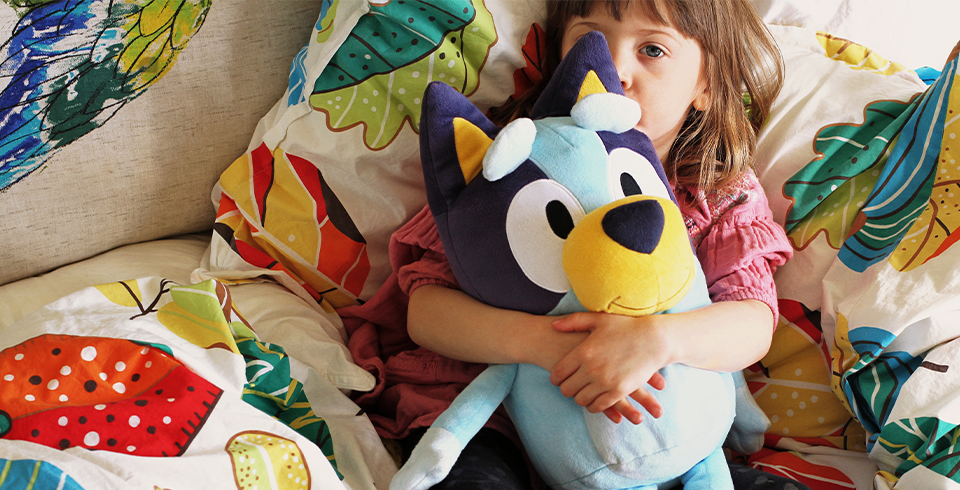The toy series featuring “Bluey”
In the colorful and captivating world of children's toys, the "Bluey" series has emerged as a beacon of imaginative play and learning. Inspired by the beloved children's TV show, the Bluey toy series features a charming blue dog, Bluey, and their family and friends. These toys are not just playthings; they are tools for creativity, social development, and family bonding. This article explores how the Bluey toy series fosters role play, enhances soft skills, and provides endless fun for children.
Role Play and Imagination:
The heart of the Bluey toy series lies in its ability to inspire role play. Children, captivated by the adventures of Bluey and their family, are encouraged to recreate these scenarios or invent new ones. This form of imaginative play is crucial for cognitive development, as it allows children to explore different perspectives, practice problem-solving, and develop storytelling skills (Sobel & Blankenship, 2021). As they engage with these toys, children step into a world of imagination, where they are free to express themselves and explore the boundaries of their creativity.
Social and Emotional Development:
Playing with Bluey toys is more than just fun; it's a journey into social and emotional learning. Through role play, children learn to empathize with different characters, understand various family dynamics, and navigate social situations. This kind of play nurtures emotional intelligence, helping children to recognize and respond to emotions in themselves and others (Smith-Flores, Bonamy, & Powell, 2023). It also enhances their ability to interact effectively with peers, fostering essential social skills that are vital for their overall development.

Creativity and Storytelling:
The Bluey toy series serves as a canvas for creativity and storytelling. Children, influenced by the narratives from the Bluey series, create their own stories, developing a sense of narrative and structure. This process not only boosts their creative thinking but also enhances language skills and emotional expression (Tsai, 2012). Storytelling through play allows children to experiment with different roles and scenarios, fostering a deeper understanding of the world around them.
Family Bonding and Cooperative Play:
Bluey toys offer a unique opportunity for family bonding. Parents (and educators) and children can engage in cooperative play, sharing in the joy of Bluey's world. Such shared play is not only enjoyable, but it strengthens family relationships and encourages teamwork and communication and strengthens family bonds (Ginsburg, 2007; Haslip & Donaldson, 2020). It reflects the strong family themes of the Bluey series, making playtime a meaningful and bonding experience.
Learning Through Play:
The Bluey series of games exemplifies the concept of learning through play. In these types of games, each character and scenario is an opportunity for children to learn valuable life lessons in a fun, engaging way (Ginsburg, 2007). Whether it is about friendship, family, or overcoming challenges, Bluey games provide a playful means for children to understand and relate to these concepts.
Conclusion:
The Bluey toy series is more than a collection of toys; it's a gateway to a world of imagination, social learning, and family fun. By fostering role play, creativity, and emotional intelligence, these toys play a pivotal role in the holistic development of children. As they embark on adventures with Bluey and her friends, children not only enjoy themselves but also develop essential life skills that will serve them well as they grow.
This article was created by Morphoses, the leading edtech platform focused on soft skills development. Don't wait another second – secure a spot for your learner & enroll in one of our Curricula today! Explore our Curricula here.
References
Ginsburg, K. R. (2007). The importance of play in promoting healthy child development and maintaining strong parent-child bonds. Pediatrics, 119(1), 182–191. doi:10.1542/peds.2006-2697
Haslip, M. J., & Donaldson, L. (2020). How early childhood educators resolve workplace challenges using character strengths and model character for children in the process. Early Childhood Education Journal, 49(2), 337–348. doi:10.1007/s10643-020-01072-2
Sobel, D. M., & Blankenship, J. (2021). Perspective taking as a mechanism for children’s developing preferences for equitable distributions. Scientific Reports, 11(1). doi:10.1038/s41598-021-84968-2
Smith-Flores, A. S., Bonamy, G. J., & Powell, L. J. (2023). Children’s reasoning about empathy and social relationships. Open Mind, 7, 837–854. doi:10.1162/opmi_a_00109
Tsai, K. C. (2012). Play, Imagination, and Creativity: A Brief Literature Review. Journal of Education and learning, 1(2), 15-20.






